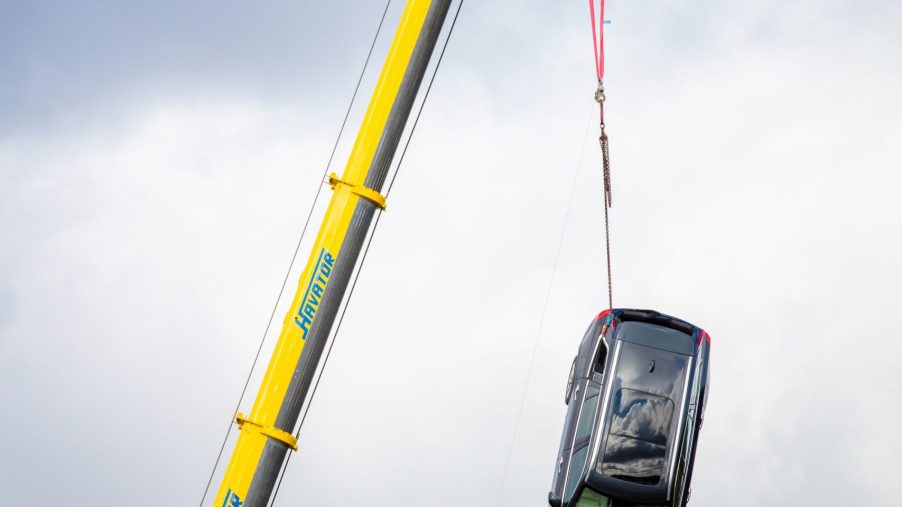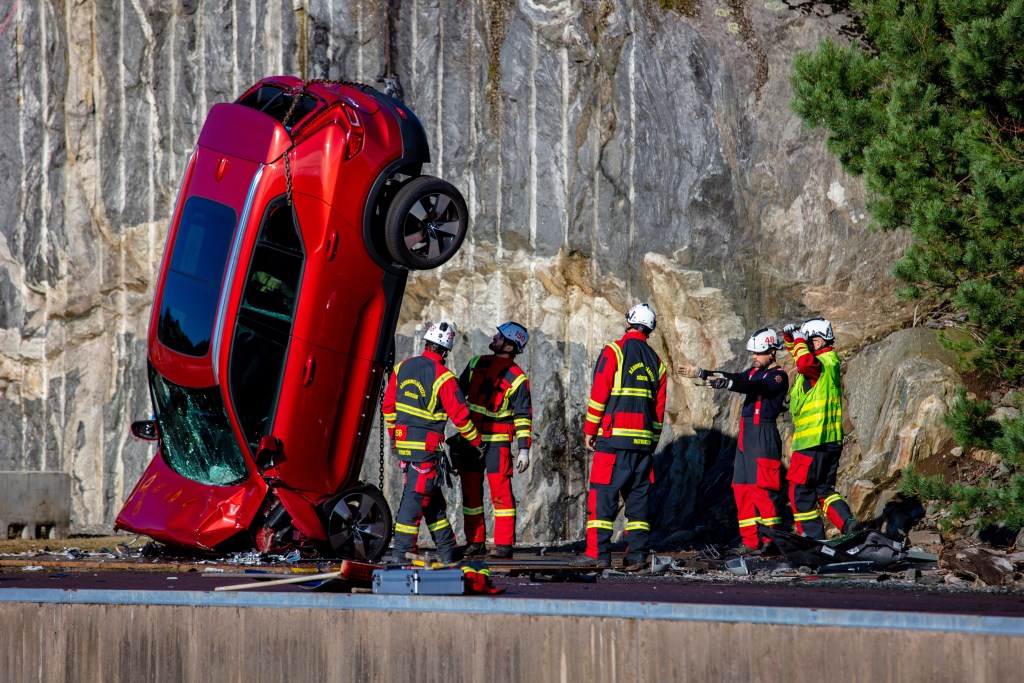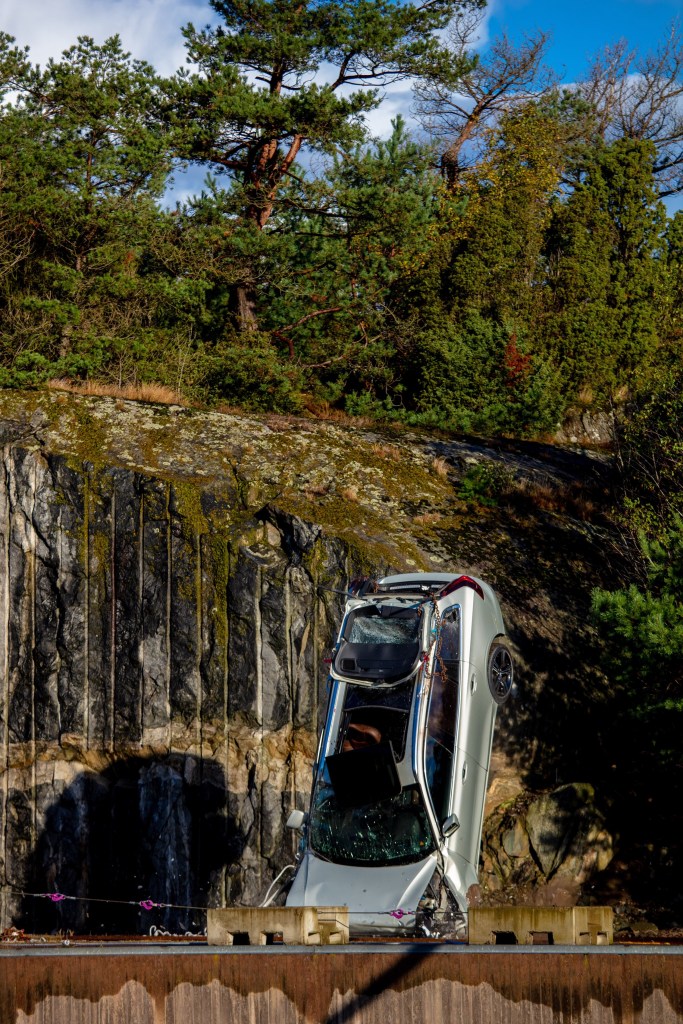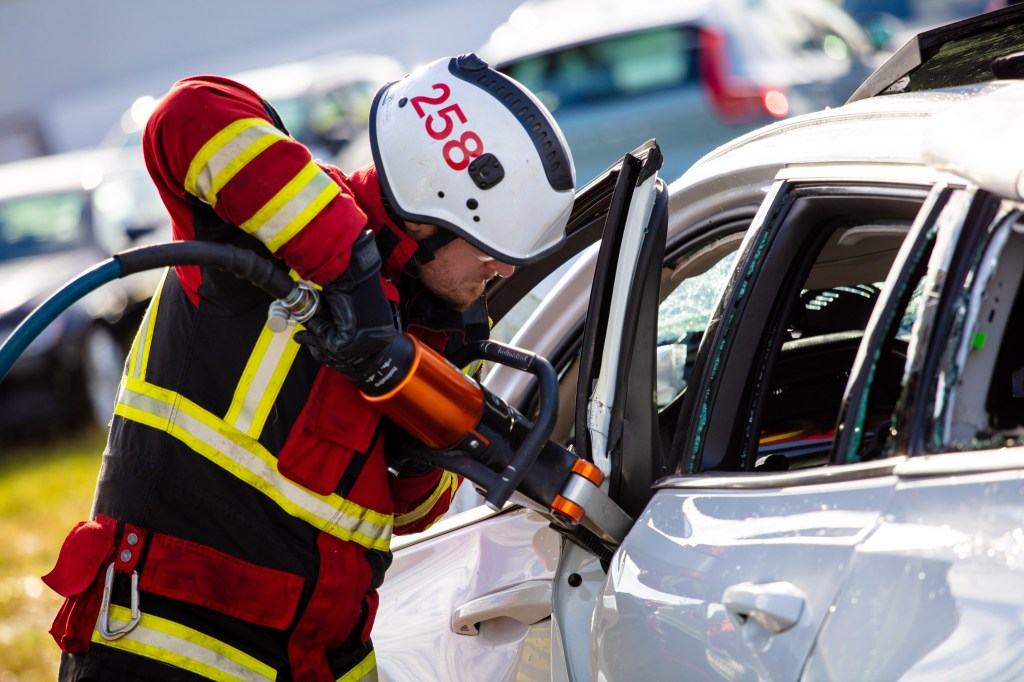
Volvo Drops Cars From Nearly 100 feet For Safety Testing, Video Provided
Every second counts for the occupants of an automobile collision. The quicker emergency personnel can reach them and begin treatment, the higher the survivability odds are. So, emergency crews will often test themselves by working on donated or scrap vehicles. They hope the tests will improve their processes and help them gain experience with equipment or new technology. This will, in turn, help them get to occupants faster. Volvo recently lent emergency crews in Sweden a hand with their testing by dropping ten new cars from nearly 100 feet. Thankfully, there are videos of the testing.
Why would Volvo crash new cars?

Emergency crews often train with older vehicles. This means that they don’t always get experience with newer metals or composite materials used in the vehicles’ construction. Also, it means that the teams don’t necessarily have enough experience with new systems, like hybrid or electric powerplants. Yet, knowing the hazardous systems is critical in a crash response. Nobody wants more casualties popping up on-site from a lack of knowing how to kill an electric system or the accidental deployment of a new type of airbag. So, Volvo chose to provide new cars for this round of testing.
“We have been working closely together with the Swedish rescue services for many years. That is because we have the same goal: to have safer roads for all. We hope no one ever needs to experience the most severe accidents, but not all accidents can be avoided. So it is vital there are methods to help save lives when the most severe accidents do happen.” – Håkan Gustafson, a senior investigator with the Volvo Cars Traffic Accident Research Team.
Crash testing with a crane is new

Normally, Volvo performs the tests in a lab-like environment. This time the testing was done outdoors with the help of a crane. The vehicles were raised to 30 meters (approximately 98 feet) and dropped at different angles. Of course, the crash footage, wreckage, and response will be analyzed and placed in a report. That report will be made available free of charge.
“Normally we only crash cars in the laboratory, but this was the first time we dropped them from a crane. We knew we would see extreme deformations after the test, and we did this to give the rescue team a real challenge to work with.” – Håkan Gustafson, a senior investigator with the Volvo Cars Traffic Accident Research Team.
Video of the dropped Volvos
Our friends at Road and Track were able to get video footage of the testing. It is viewable at this link. Each of the drops captured in the video showed significant deformation of the vehicles. So, it is easy to see how victim extrication can become complicated quickly. The need for new tools and the knowledge how to use them is also touched on in the video.

Certainly, anything automakers can afford to do to help make vehicles safer for occupants is appreciated. Thankfully, safety has come a long way from the days of riding around with no belts, no airbags, and even lighting. Tests like Volvo’s crane drop may be pricey to perform, but the effects are a lot more far-reaching. The number of lives potentially saved and families not disrupted with awful news is invaluable. I’m sure we are all grateful for safety improvements.


